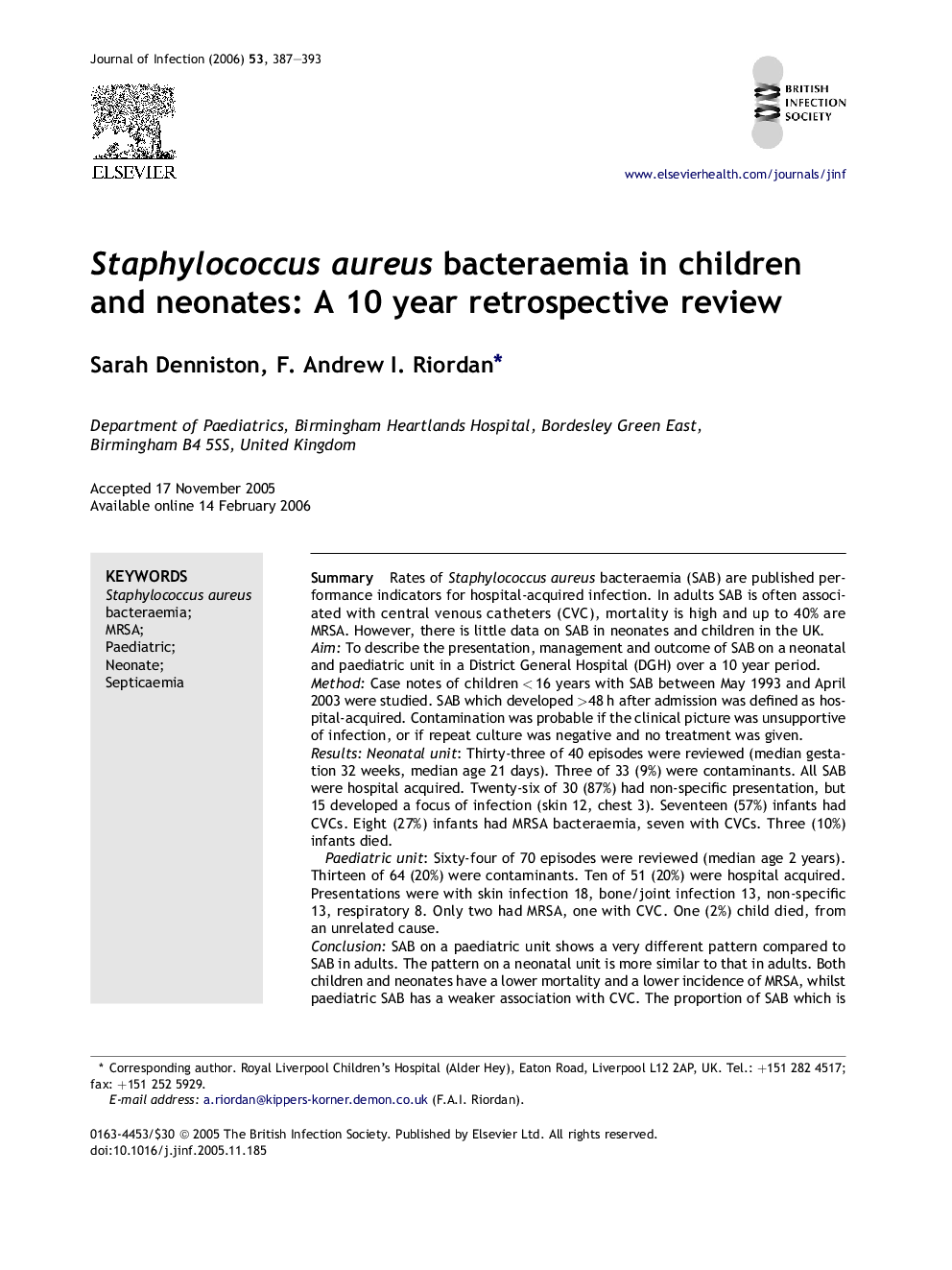| Article ID | Journal | Published Year | Pages | File Type |
|---|---|---|---|---|
| 3376562 | Journal of Infection | 2006 | 7 Pages |
SummaryRates of Staphylococcus aureus bacteraemia (SAB) are published performance indicators for hospital-acquired infection. In adults SAB is often associated with central venous catheters (CVC), mortality is high and up to 40% are MRSA. However, there is little data on SAB in neonates and children in the UK.AimTo describe the presentation, management and outcome of SAB on a neonatal and paediatric unit in a District General Hospital (DGH) over a 10 year period.MethodCase notes of children < 16 years with SAB between May 1993 and April 2003 were studied. SAB which developed >48 h after admission was defined as hospital-acquired. Contamination was probable if the clinical picture was unsupportive of infection, or if repeat culture was negative and no treatment was given.ResultsNeonatal unit: Thirty-three of 40 episodes were reviewed (median gestation 32 weeks, median age 21 days). Three of 33 (9%) were contaminants. All SAB were hospital acquired. Twenty-six of 30 (87%) had non-specific presentation, but 15 developed a focus of infection (skin 12, chest 3). Seventeen (57%) infants had CVCs. Eight (27%) infants had MRSA bacteraemia, seven with CVCs. Three (10%) infants died.Paediatric unit: Sixty-four of 70 episodes were reviewed (median age 2 years). Thirteen of 64 (20%) were contaminants. Ten of 51 (20%) were hospital acquired. Presentations were with skin infection 18, bone/joint infection 13, non-specific 13, respiratory 8. Only two had MRSA, one with CVC. One (2%) child died, from an unrelated cause.ConclusionSAB on a paediatric unit shows a very different pattern compared to SAB in adults. The pattern on a neonatal unit is more similar to that in adults. Both children and neonates have a lower mortality and a lower incidence of MRSA, whilst paediatric SAB has a weaker association with CVC. The proportion of SAB which is hospital acquired is low on a paediatric unit, making SAB an unreliable performance indicator. Most SA in blood cultures are not due to contamination. Prospective studies are needed to determine appropriate investigation and treatment.
